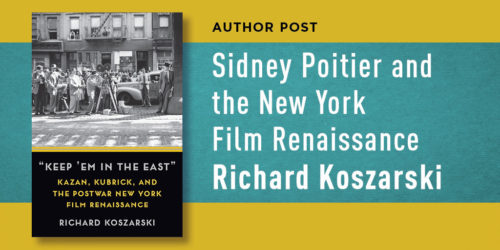Seneca Village and Fair Compensation
What the Archives Reveal
Sara Cedar Miller

“This book is incomplete without finding those documents. They have to exist!” This became my constant lament to the guardians of New York City’s archives and especially to the ever-patient and all-knowing archivist Ken Cobb, the assistant commissioner of the New York City Department of Records. The information I was seeking was the amount of money paid by the city to the prepark landowners in order to buy the land for Central Park. It would answer so many questions raised in Before Central Park. The frequently published total came to over $5 million for the land from Fifty-Ninth Street to 106th Street. The payment for the last four blocks would come seven years later, but how much did each of over one thousand individuals receive for their property in 1856? In particular, the most burning question to many was the payment to the roughly fifty Black landowners for their property in the west side community of Seneca Village in relation to awards to the hundreds of white landowners, most of whom did not live in the prepark.
After many frustrating hours of web searching, I found the extraordinary account of New York City’s record-keeping crisis at the turn of the twentieth century. Part Three of the 250-page Report on the archives and public records of the State of New York and of New York City by historian Dr. Herbert L. Osgood of Columbia University detailed the four-month survey he conducted in 1901 of all the records found in government repositories. More often than not, these valuable keys to the city’s history, reaching back to New Amsterdam, lay dusty, dumped, and disregarded in storage. Osgood’s detailed inventory of one such room listed “7 volumes relating to expenditures for Central Park, 1856-1858.” Bingo!
Having made this exciting discovery, I turned again to Ken, but alas, he confirmed that these volumes had not surfaced to date. Jump forward many months to September 13, 2017, when up popped an email from my friend Aaron Goodwin, author of New York City Municipal Archives: An Authorized Guide for Family Historians, with a photograph taken by Research Assistant Marcia Kirk of the seven volumes lying on a wooden pallet in the Brooklyn storage facility of the Municipal Archives. Did I want to see them? Aaron asked.
The volumes, as precious to me as the discovery of King Tut’s tomb was to British archeologist Howard Carter, were as spectacular as I had hoped. There was some mold, but the ink was legible and the light-blue paper undamaged and only slightly faded. The property release forms have spaces for the date, owner’s name, block and lot(s) or number(s), and the monetary award paid by the city. They are signed on the back, or marked + when the owner was unable to sign his or her name, and signed by the Commissioner of Deeds.
Apparently, the names of the landowners were noted in four separate volumes that corresponded to the four quadrants of the prepark, but not all of them have survived has survived. The releases that exist in the seven volumes give a good financial picture of the damages granted to the owners and surprisingly to many of the lessees, who had paid for construction of their homes on rented lots.
With the help of mathematician Andrew Fox, I sorted and averaged the payment data in relation to the city’s grid, by block and avenue. The results, found in Before Central Park, reinforce the real estate mantra “location, location, location.” In general, the closer a property was to the growing, built-up city, the higher the payment to its owner. Furthermore, lots fronting on avenues generally received more than mid-block lots facing only a street. Accordingly, the most valuable lots for which we have information were those on Sixtieth Street and Fifth Avenue, worth over $2,200 per lot on average.
Topography does not appear to have been an important criterion in determining value. Despite the proliferation of hills and valleys, massive rock outcrops, and fetid swamps at the southern end of the future park, the owners there received the highest awards. Lots with large rocks were valued similarly to neighboring lots without them.
And what about the landowners themselves? Did a discrepancy exist due to race or economic standing? Here again, the awards seem to have been based largely on location. For example, two of the wealthiest landowners, the Scottish land speculator Archibald Watt and his shrewd stepdaughter Mary G. Pinkney, owned much of the land at the northern end of the prepark, but for it they received a small amount per lot, approximately $380.
Seneca Village, the unprecedented African American landowning community between Eighty-Third and Eighty-Ninth Streets, lay in part along Seventh Avenue and on both sides of Eighty-Sixth Street, a major crosstown street. The payments for these lots give no indication that they were assessed differently from lots in the other parts of the prepark: location still appears to have been the dominant consideration. The lots in Seneca Village were farther from the growing city than the lots in the 60s and 70s and nearer than the lots in the 90s and 100s, and the assessed prices reflect that fact. Avenues and major thoroughfares played the same role in Seneca Village as elsewhere. The lots along Seventh Avenue at Eighty-Third Street were valued on average at approximately $700 and mid-block lots on Eighty-Third at $530. On the major crosstown thoroughfare Eighty-Sixth Street, equivalent in importance to an avenue, owners received on average $748 for their mid-block lots, while similar lots behind them on Eighty-Fifth Street were valued at $530 per lot. Although we cannot reconstruct the thoughts of the surveyors, we did not find anything to suggest that race played a significant role in determining the compensation given to landowners.
Due to her successful real estate career, Elizabeth Gloucester became one of the richest Black women in America by her death in 1883. She got her start in 1849 and 1850 by paying $100 each for two lots in Seneca Village, though like many other Black and white landowners, she never lived in the prepark. For her mid-block lot on Eighty-Fourth Street, the city awarded her $520 and for her similarly sized lot near Eighty-Ninth Street, she was given $460. The discrepancy lay in the difference between the locations of her two properties, with the higher award for the lot closer to the city.
Eminent domain, the power of a governmental agency to take private property for public use in exchange for “just compensation,” was stipulated in the Fifth Amendment of the U.S. Constitution, and “just compensation” has been interpreted to be the fair market value of a property. The fairness of the prepark landowners’ compensation is a complex issue that is discussed in Before Central Park, but the values of two lots—one within the jurisdiction of the prepark and one just outside of it—provide one comparison that suggests that the awards were in keeping with the real estate market of the day. Within months of receiving the $460 award for her Seneca Village mid-block lot on West Eighty-Ninth Street, Elizabeth Gloucester purchased a lot for $450 just 250 feet from Fifth Avenue and Ninety-Ninth Street. Although it was located ten blocks north of her former west side property, the burgeoning real estate tycoon knew the value of her sensational new investment both near Fifth Avenue and steps from the new Central Park.
Yet even though most resident landowners in Seneca Village, like Elizabeth Gloucester, made a generous profit, the outcome would at best have been bittersweet. Yes, the financial investment of the short-term and long-term landowners earned a profit that would greatly enhance the quality of their lives materially—and we have several last wills and testaments of the former owners to confirm that—but the emotional and spiritual connection of the more long-standing residents could never be monetized. And given all the inequities that Blacks experienced in every aspect of their lives, finding a new home and a new neighborhood that would promise the relative health, safety, security, and close-knit community that Seneca Village had provided must have caused anguish, anger, and fear. The villagers did not reassemble in another location.
Sara Cedar Miller is the historian emerita of the Central Park Conservancy and the author of Before Central Park, which will be published in June 2022.









